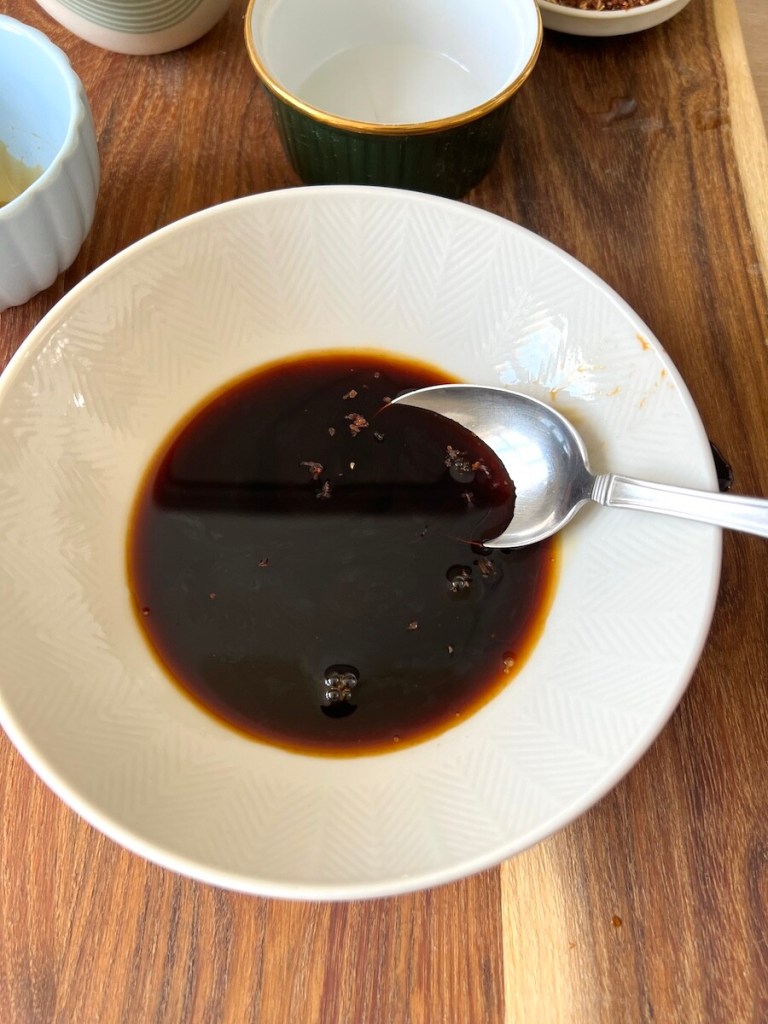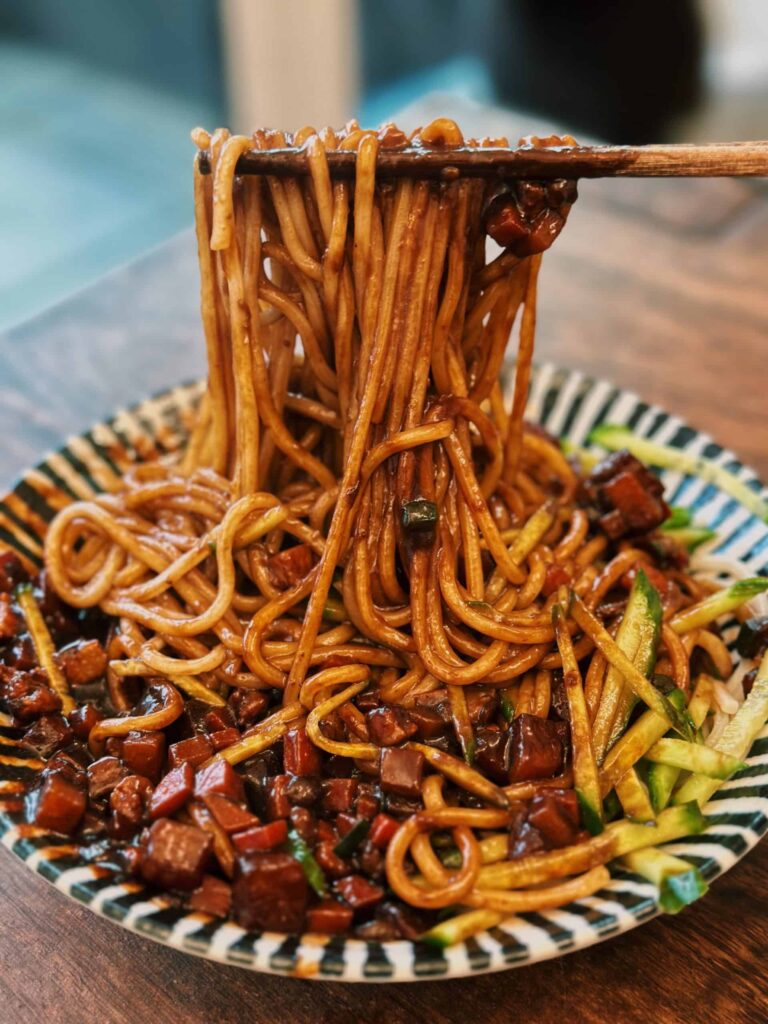Ramen Oil Recipe: Transform Your Bowl with Flavorful Depth
Ramen oil adds a rich, savory flavor to your ramen. It can elevate even the simplest bowl.
Making your own ramen oil is easy and rewarding. This guide will show you how to create delicious ramen oil at home. Freshly made ramen oil enhances the taste of your noodles. Plus, it’s healthier and tastier than store-bought options.
You can customize the flavor to your liking, whether you prefer garlic, ginger, or a spicy kick. With a few simple ingredients and steps, you’ll have a flavorful ramen oil ready to use. Let’s dive into the world of homemade ramen oil and bring your ramen bowls to life!
Introduction To Ramen Oil
Ramen oil adds depth and flavor to a bowl of ramen. This special oil, often infused with garlic or chili, can elevate the taste of your homemade ramen. It’s an essential ingredient that makes your ramen experience more enjoyable.
What Is Ramen Oil?
Ramen oil is a flavored oil used in ramen dishes. It is usually made with a base of vegetable or sesame oil. It often includes ingredients like garlic, ginger, or chili. The oil is heated to infuse these flavors, creating a rich, aromatic condiment.
This oil can vary in taste. Some are mild and nutty, while others are spicy and bold. The type of ramen oil used can change the entire flavor profile of the dish.
Importance In Ramen
The importance of ramen oil cannot be overstated. Here’s why:
- Flavor Enhancer: It adds layers of flavor to the broth.
- Aroma: The infused oil releases a delightful scent as you eat.
- Texture: It gives the broth a silky, smooth texture.
Using ramen oil can transform a simple bowl into something extraordinary. It’s the secret ingredient that many chefs swear by.
Essential Ingredients
Creating the perfect ramen oil requires a careful selection of ingredients. The right combination brings out the best flavors in your ramen. Below, we explore the essential ingredients for making ramen oil.
Choosing The Right Oils
The foundation of ramen oil is the oil itself. It’s important to choose high-quality oils for the best taste. Here are some popular options:
- Soybean Oil: A common choice in many recipes. It has a neutral taste.
- Sesame Oil: Adds a nutty, aromatic flavor to your ramen.
- Canola Oil: Another neutral oil that doesn’t overpower other flavors.
| Oil Type | Flavor Profile |
|---|---|
| Soybean Oil | Neutral |
| Sesame Oil | Nutty and Aromatic |
| Canola Oil | Neutral |
Aromatic Additions
To enhance the flavor of your ramen oil, you can add various aromatics. These ingredients infuse the oil with rich, deep flavors. Here are some common aromatic additions:
- Garlic: Adds a sharp, pungent flavor. Use fresh or roasted.
- Ginger: Provides a warm, spicy kick. Fresh ginger works best.
- Green Onions: Gives a mild, sweet flavor. Chop finely.
Other aromatics include:
- Chilies: For a spicy touch. Adjust the amount to your taste.
- Kombu: Adds umami. A type of edible kelp used in Japanese cooking.
- Dried Shiitake Mushrooms: Deepens the umami flavor. Soak before using.
Combining the right oils with aromatic additions creates a flavorful ramen oil. Experiment to find your perfect blend.
Preparation Techniques
Creating the perfect ramen oil enhances the dish’s flavor. The preparation techniques are crucial. This section will guide you through the process step-by-step. Let’s dive into the art of making ramen oil.
Infusing Oils
First, select your oil. Sesame oil or vegetable oil works well. Next, choose your aromatics. Garlic, ginger, and green onions are popular choices. Heat the oil in a pan over medium heat. Add the aromatics to the hot oil. Let them sizzle until fragrant, about 2-3 minutes. Be careful not to burn them. Burnt aromatics can make the oil bitter.
After infusing, remove the pan from heat. Let the oil cool down. This cooling step is crucial. It allows the flavors to meld. Once cooled, your infused oil is almost ready.
Straining And Storing
Strain the oil using a fine mesh sieve. This removes the solid aromatics. Make sure no small pieces remain. Clear oil ensures a smooth texture.
Store your strained oil in a clean, airtight container. Glass jars work best. Keep the jar in a cool, dark place. Proper storage extends the oil’s shelf life. Use the oil within a month for the best flavor.
Following these techniques ensures flavorful ramen oil. Your homemade ramen will taste more authentic. Enjoy the rich, aromatic essence in every bowl.

Credit: www.halfbakedharvest.com
Popular Ramen Oil Varieties
Ramen oil enhances the taste of your ramen dish. It adds depth and flavor, making each bowl unique. There are several popular varieties that you can try at home. Let’s explore two of these: Chili Oil and Garlic Oil.
Chili Oil
Chili oil is a staple in many ramen dishes. It brings a spicy kick that warms the palate. This oil is made by infusing oil with dried chili peppers.
To make it at home, you will need:
- 1 cup vegetable oil
- 2 tablespoons crushed red pepper flakes
- 1 teaspoon sesame oil
- 1 teaspoon soy sauce
- 1 teaspoon sugar
Here is a simple process:
- Heat the vegetable oil in a pan.
- Add the crushed red pepper flakes and cook for 2 minutes.
- Remove from heat and let it cool.
- Mix in the sesame oil, soy sauce, and sugar.
- Strain the oil and store it in a jar.
This oil adds a fiery touch to your ramen. Adjust the spice level by using more or fewer pepper flakes.
Garlic Oil
Garlic oil is another favorite. It adds a rich, aromatic flavor to your ramen. You can make this oil easily at home too.
Ingredients you will need:
- 1 cup olive oil
- 8 cloves garlic, thinly sliced
- 1 teaspoon salt
Follow these steps:
- Heat the olive oil in a pan over medium heat.
- Add the sliced garlic and cook until golden brown.
- Remove from heat and let it cool.
- Add salt and mix well.
- Strain the oil and store it in a jar.
This oil infuses your ramen with a delightful garlic essence. Use it sparingly to avoid overpowering the dish.
Customizing Your Ramen Oil
Creating your own ramen oil is a fun and tasty adventure. With a few tweaks, you can make the perfect oil to suit your taste buds. Let’s explore how you can adjust the spice levels and add unique flavors to your ramen oil.
Adjusting Spice Levels
Do you love spicy food? Or do you prefer a milder taste? Adjusting the spice levels in your ramen oil can make a big difference.
- Less Spicy: Use fewer chili flakes or remove seeds from the peppers.
- Moderately Spicy: Use standard amounts of chili flakes or add a dash of hot sauce.
- Very Spicy: Add extra chili flakes, hot sauce, or even a dash of cayenne pepper.
Experimenting with different peppers can also change the spice level. Try using jalapeños for a moderate kick or habaneros for intense heat.
Adding Unique Flavors
To make your ramen oil stand out, try adding unique flavors. Here are some ideas:
- Garlic: Add minced garlic for a rich, aromatic taste.
- Ginger: Fresh ginger adds a spicy, tangy note.
- Sesame: Toasted sesame seeds or sesame oil can give a nutty flavor.
- Citrus: A splash of lemon or lime juice adds freshness and zest.
Combining these flavors can create a complex and delicious ramen oil. For example, garlic and ginger pair well together. Or try sesame and citrus for a unique twist.
| Flavor Additions | Effect on Ramen Oil |
|---|---|
| Garlic | Rich, aromatic taste |
| Ginger | Spicy, tangy note |
| Sesame | Nutty flavor |
| Citrus | Freshness and zest |
With these tips, you can create a ramen oil that is perfect for your taste. Adjust the spice levels and add unique flavors to make your bowl of ramen truly special.

Credit: farahjeats.com
Pairing Ramen Oil With Broths
Ramen oil adds depth and flavor to your bowl of ramen. Each broth has its unique characteristics. Pairing the right oil with the right broth can elevate your dish. Let’s explore the best ways to match ramen oil with light and rich broths.
Matching Light Broths
Light broths like shio (salt) and shoyu (soy sauce) are delicate. They benefit from subtle oils that do not overpower their flavors.
- Shrimp oil: Adds a hint of seafood flavor.
- Garlic oil: Enhances the umami without being too strong.
- Sesame oil: Provides a nutty aroma and a slight richness.
Shrimp oil works well with shio broth. Garlic oil pairs nicely with shoyu broth. Sesame oil complements both shio and shoyu broths, adding depth without masking their subtle flavors.
Enhancing Rich Broths
Rich broths like tonkotsu (pork bone) and miso are hearty and full-bodied. They require robust oils that can stand up to their intensity.
| Broth | Suggested Oils |
|---|---|
| Tonkotsu | Chili oil, Black garlic oil |
| Miso | Butter oil, Spicy sesame oil |
For tonkotsu broth, chili oil brings heat and enhances the richness. Black garlic oil adds a deep, caramelized flavor. In miso broth, butter oil introduces creaminess, while spicy sesame oil provides a bold kick.
Experimenting with different oils can help you discover your favorite combinations. Enjoy the process and the delightful flavors that result.
Tips For Perfect Ramen Oil
Creating the perfect ramen oil can elevate your homemade ramen. It adds depth and richness to your bowl. Below are some essential tips to help you make the perfect ramen oil.
Balancing Flavors
Balance is key in ramen oil. Combine ingredients like garlic, ginger, and sesame oil. Each should complement, not overpower, the other.
Use soy sauce and mirin for a savory-sweet note. Add chili oil for some heat. Taste as you go to ensure harmony among flavors.
Avoiding Common Mistakes
Don’t burn your ingredients. Keep the heat low to medium. High heat can make the oil taste bitter.
Strain the oil to remove solid bits. This ensures a smooth texture. Clean oil enhances the ramen experience.
Avoid using too much oil. Start with a small amount. You can always add more if needed.
Store your ramen oil in a cool, dark place. Use it within a week for best results. Fresh oil tastes better.
Storing And Reusing Ramen Oil
Ramen oil adds a rich, flavorful touch to your homemade ramen. Proper storage and reuse of this oil can enhance your dishes while ensuring safety. Learn how to store and reuse ramen oil effectively.
Proper Storage Methods
Storing ramen oil correctly is crucial to maintain its quality. Follow these steps:
- Use an airtight container to prevent contamination.
- Store in a cool, dark place like a pantry or cupboard.
- Keep away from direct sunlight to preserve its flavor.
If you store the oil in the refrigerator, it will last longer. Always label the container with the date of preparation.
Reusing Safely
Reusing ramen oil can save money and reduce waste. To reuse safely:
- Filter the oil after each use to remove food particles.
- Heat the oil to a high temperature before reusing.
- Avoid using the oil more than three times to maintain quality.
Use your senses to check the oil. If it smells rancid or has an off taste, discard it. Always ensure the oil is clear and free of impurities before reusing.

Credit: www.halfbakedharvest.com
Frequently Asked Questions
What Is Ramen Oil?
Ramen oil is a flavorful oil added to ramen. It enhances the broth’s richness and aroma. Common ingredients include garlic, sesame, and chili.
How To Make Ramen Oil?
To make ramen oil, heat vegetable oil with garlic, ginger, and sesame seeds. Strain and store in a jar.
Can I Use Olive Oil For Ramen Oil?
Yes, you can use olive oil. However, traditional recipes prefer neutral oils like vegetable or sesame.
How Long Does Ramen Oil Last?
Ramen oil lasts about one month when stored in an airtight container. Keep it in the refrigerator.
Conclusion
Creating your own ramen oil adds rich flavor to your dishes. It’s simple, customizable, and enhances every meal. Follow the steps, experiment with ingredients, and enjoy delightful ramen every time. With this easy recipe, elevate your homemade ramen to new heights.
Happy cooking!





